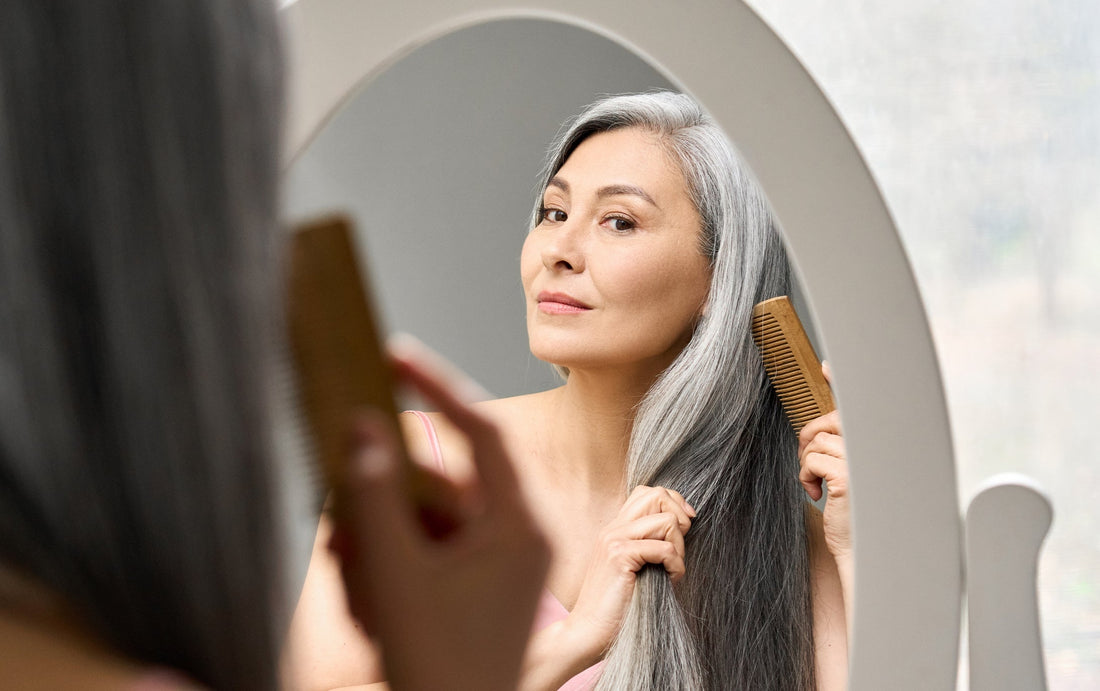
How to Treat Hair Loss: The Best Natural, Medical, and Procedural Solutions
Hair loss can be distressing, but the good news is that effective treatments are available. The key to successful treatment lies in identifying the underlying cause and tailoring a plan that suits each individual’s needs.
Whether you’re looking for natural remedies, medical treatments, or advanced procedures, this guide will help you understand the best options available for restoring hair health.
1. Natural Treatments for Hair Loss
Many people prefer a holistic approach to hair restoration, focusing on scalp health, diet, and lifestyle changes. While natural treatments may not work for every type of hair loss, they can support hair growth and overall follicle health when used correctly.
A. Scalp Care and Stimulation
A healthy scalp is essential for strong, thriving hair follicles. Natural scalp care involves:
—> Scalp Massages: Increases blood circulation to hair follicles, promoting nutrient delivery.
—> Essential Oils: Rosemary oil, peppermint oil, and tea tree oil have been shown to support scalp health and may encourage growth when used regularly.
—> Aloe Vera: Soothes inflammation and maintains scalp hydration, reducing conditions like dandruff and seborrheic dermatitis.
B. Nutritional Support for Hair Growth
Hair is made up of keratin, a protein that relies on a steady supply of essential nutrients. Deficiencies in key vitamins and minerals can trigger hair shedding.
—> Iron: Crucial for oxygen transport to hair follicles. Low levels can cause telogen effluvium.
—> Vitamin D: Essential for follicle cycling. Low levels are linked to alopecia areata.
—> Zinc & Biotin: Help strengthen the hair shaft and reduce breakage.
—> Protein & Omega-3 Fatty Acids: Found in eggs, fish, and nuts, these nutrients support overall hair strength and shine.
For those struggling with deficiencies, dietary changes or supplements can help restore hair vitality.
C. Low-Level Laser Therapy (LLLT)
LLLT is a non-invasive, FDA-approved treatment that uses red light therapy to stimulate hair follicles. It improves blood flow, reduces inflammation, and extends the anagen (growth) phase of the hair cycle. Home devices, such as laser combs and caps, can be effective when used consistently.
2. Medical Treatments for Hair Loss
When hair loss progresses beyond mild thinning, FDA-approved medications can help slow shedding and stimulate regrowth.
A. Minoxidil (Topical Treatment)
Minoxidil is an over-the-counter treatment that increases blood flow to the scalp and extends the hair growth phase.
—> Available in 2% and 5% formulations (liquid or foam).
—> Best for androgenetic alopecia (male and female pattern baldness) but also used for other types of hair loss.
—> Results take 3 to 6 months to become noticeable.
***Tip: Consistency is key—stopping minoxidil can lead to hair shedding.***
B. Finasteride (Oral DHT Blocker for Men)
Finasteride (Propecia) is a prescription medication that works by blocking dihydrotestosterone (DHT), the hormone responsible for shrinking hair follicles in androgenetic alopecia.
—> Best suited for male pattern baldness (not FDA-approved for women).
—> Can slow hair loss and promote regrowth, particularly on the crown.
—> Side effects may include decreased libido in some users.
C. Spironolactone (DHT Blocker for Women)
For women experiencing hormonal hair loss, spironolactone is often prescribed. It works by:
—> Reducing androgen levels, which helps prevent follicle shrinkage.
—> Particularly effective in women with PCOS or androgen sensitivity.
3. Advanced Procedures for Hair Restoration
For those seeking more aggressive hair restoration strategies, modern dermatology offers several highly effective procedures.
A. Platelet-Rich Plasma (PRP) Therapy
PRP therapy is a regenerative treatment that uses the patient’s own blood to stimulate hair growth.
—> How it Works: A small amount of blood is drawn, processed to isolate growth factors, and injected into the scalp.
—> Effectiveness: Increases hair thickness, reduces shedding, and improves follicle survival.
—> Ideal For: Androgenetic alopecia and telogen effluvium.
—> Treatment Plan: Usually done once a month for 3-4 months, followed by maintenance treatments.
B. Microneedling for Hair Growth
Microneedling involves using tiny needles to create micro-injuries in the scalp, triggering collagen production and increasing blood flow.
—> Boosts natural growth factors and enhances topical treatment absorption (such as minoxidil or PRP).
—> Performed by dermatologists or at-home using a dermaroller (0.5 mm - 1.5 mm needles).
—> Studies show microneedling combined with minoxidil yields better results than minoxidil alone.
C. Hair Transplant Surgery
For advanced hair loss, hair transplantation offers a permanent solution.
Two Main Techniques:
1. Follicular Unit Transplantation (FUT): A strip of scalp is removed, and follicles are transplanted.
2. Follicular Unit Extraction (FUE): Individual follicles are extracted and transplanted, leaving minimal scarring.
—> Best suited for male pattern baldness or severe hair loss in women.
—> Results are permanent, but new hair growth takes 6-12 months.
D. Scalp Injections (New Therapies)
Emerging treatments include:
—> Exosome Therapy: Using stem cell-derived growth factors to stimulate hair growth.
—> Janus Kinase (JAK) Inhibitors: Showing promise for autoimmune hair loss (alopecia areata).
Choosing the Right Treatment for You! Consult with your doctor or a hair loss specialist.
The best hair loss treatment depends on the cause of your shedding. Here’s a quick guide:
|
Hair Loss Type |
Best Treatments |
|
Genetic Hair Loss (Androgenetic Alopecia) |
Minoxidil, Finasteride (men), Spironolactone (women), PRP, Hair Transplant |
|
Telogen Effluvium (Stress-Related Shedding) |
Nutritional Support, Scalp Care, PRP, LLLT |
|
Alopecia Areata (Autoimmune Hair Loss) |
Corticosteroids, PRP, JAK Inhibitors |
|
Traction Alopecia (Tight Hairstyles) |
Scalp Oils, Minoxidil, Lifestyle Changes |
|
Scalp Conditions (Psoriasis, Dandruff, Fungal Infections) |
Medicated Shampoos, Scalp Exfoliation |
Take Control of Your Hair Health
Hair loss is treatable, but early intervention is key. Whether you prefer natural remedies, medical treatments, or cutting-edge procedures, there is a solution that fits your needs.
If you’re struggling with hair loss, we recommend scheduling a personalized consultation with a Physicain or hair loss specialist to determine the best treatment plan for your unique condition.
Your hair is a reflection of your health—let Safo Hair help restore its strength and vitality.

